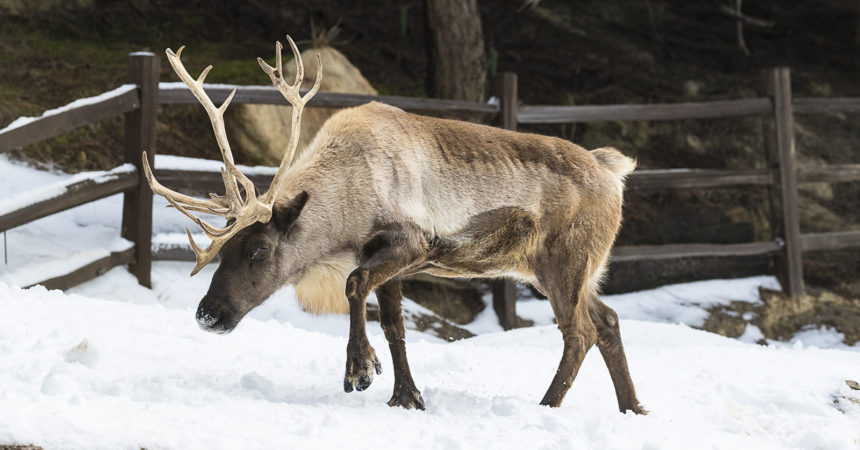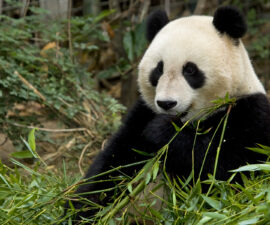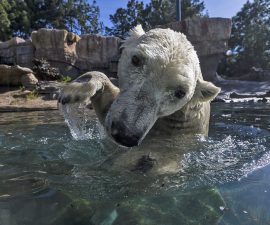Want to join in ‘reindeer games’ and have all kinds of festive fun? Come to the San Diego Zoo December 14 – January 6 for Jungle Bells Presented by California Coast Credit Union. Click here to learn more!
A popular Christmas song, Up on the Rooftop, describes Santa Claus and his reindeer-pulled sleigh landing on the roof on Christmas Eve. Some of you may remember the chorus:
Ho, ho, ho! Who wouldn’t go?
Ho, ho, ho! Who wouldn’t go?
Up on the rooftop,
Click, click, click.
Down through the chimney with good Saint Nick!
Did you ever wonder about those clicks? Well, they’re really a thing!
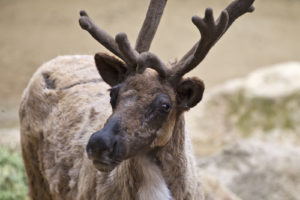
Santa and his sleigh up on your rooftop may stretch the imagination, but reindeer Rangifer tarandus are as real as you are. While they aren’t found at the North Pole (it’s in the middle of the Arctic Ocean), they live in the neighborhood. Reindeer roam the northernmost tundra and taiga (subarctic forest) of Europe, Asia, Greenland, and North America. At least 3,000 years ago, probably in Lapland, reindeer were domesticated. Indigenous people—most notably the Sami—of northern Finland, Sweden, Norway, and Russia still rely on reindeer as beasts of burden and raise them for their milk, meat, and hides. North America’s wild populations are better known as caribou.
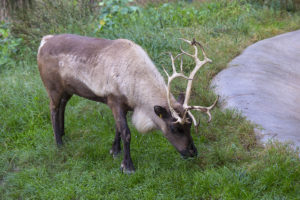
But getting back to the song; what’s with the clicking? When reindeer (or caribou) walk, they indeed make a loud clicking noise. Their two-toed hoofs are hairy, broad, flat, and slightly concave—adapted for trekking over ice and snow or slogging through soft, soggy ground.
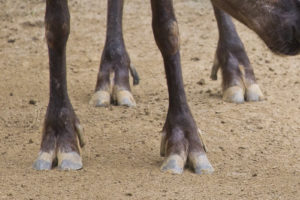
With each step, a stretchy tendon in a reindeer’s hoof clicks as it slips over a foot bone. The two halves of the hoof spread apart to support its weight. As a reindeer lifts its food, the tendon springs the two halves of the hoof back together, which helps the reindeer lift its feet out of the snow. Click, click, click!
Here’s another thing about Santa’s reindeer: experts have reached the consensus that they are female. Male reindeer drop their antlers every year after the rut (breeding season), in late October. Females don’t drop their antlers until spring, so an antlered reindeer on December 24 can only be female. In other deer species, only males grow antlers; they are mostly an adaptation for the fierce competitions between males. But reindeer—male and female—also use their antlers to clear away snow while foraging, and females may brandish the points at predators, to defend their calves.
You may or may not meet female reindeer pulling a sleigh this Christmas, but if you do, you’ll hear them coming. Click, click, click.
Donna Parham is a staff writer for San Diego Zoo Global. Read her previous article, Thank a Pollinator.

